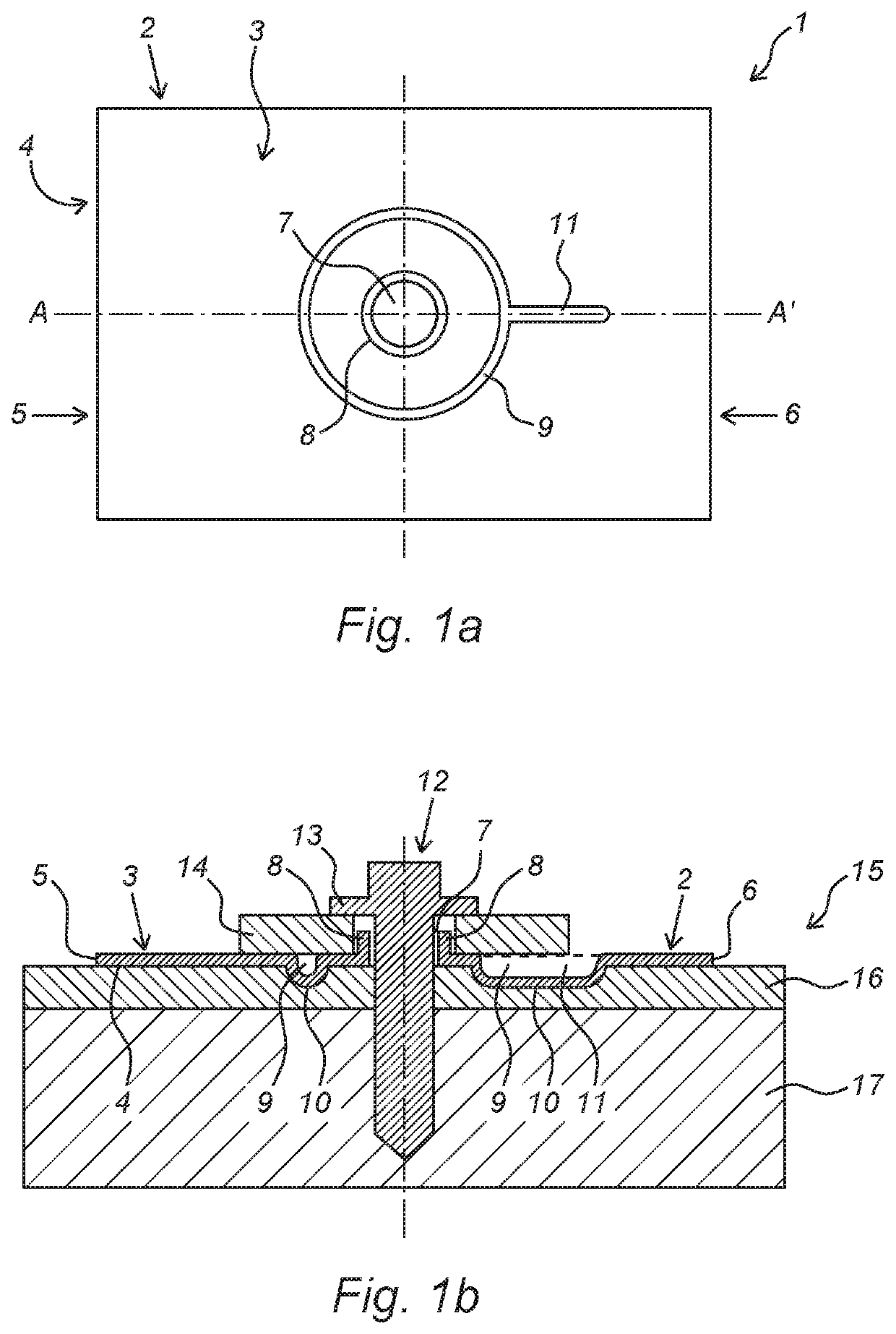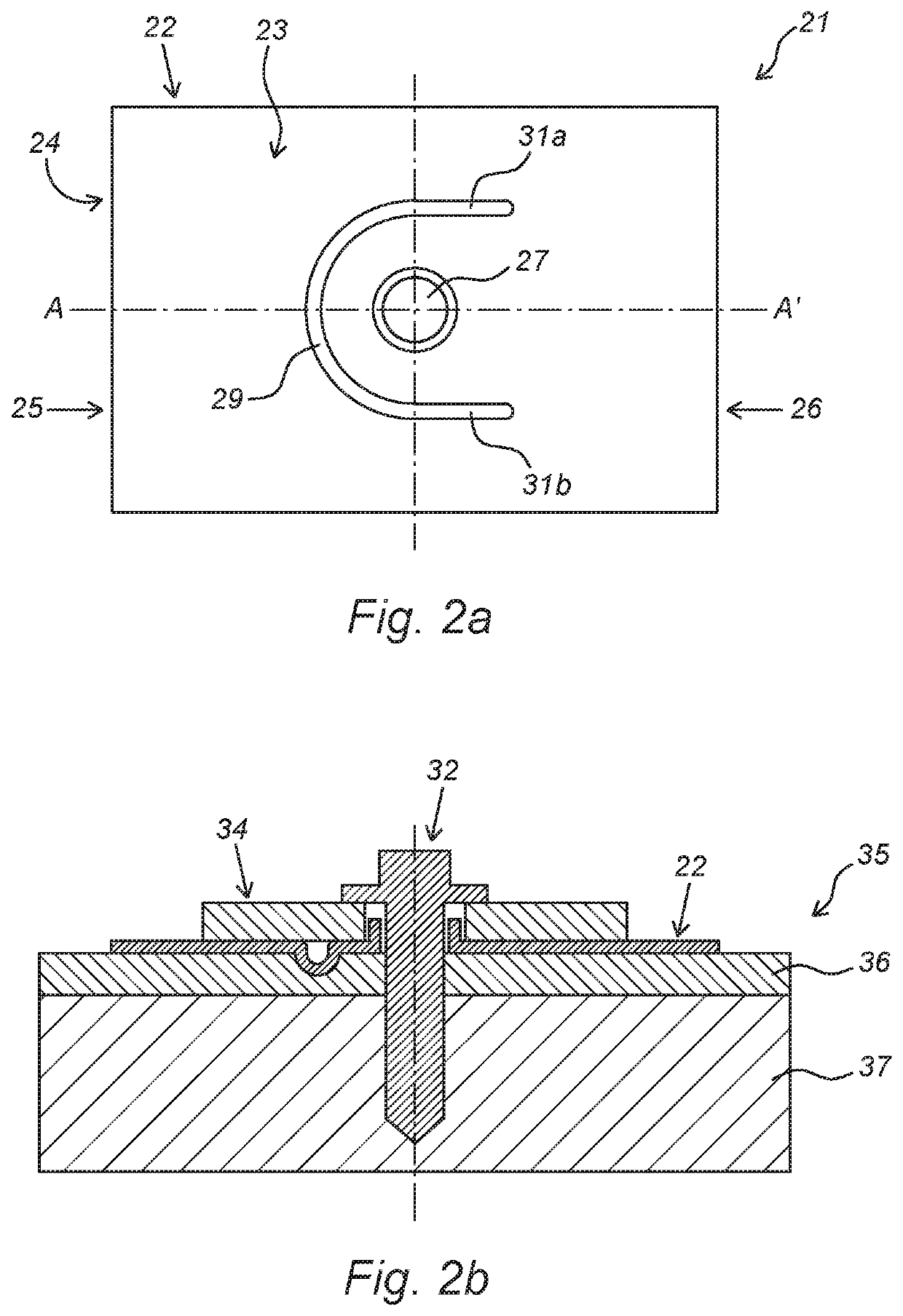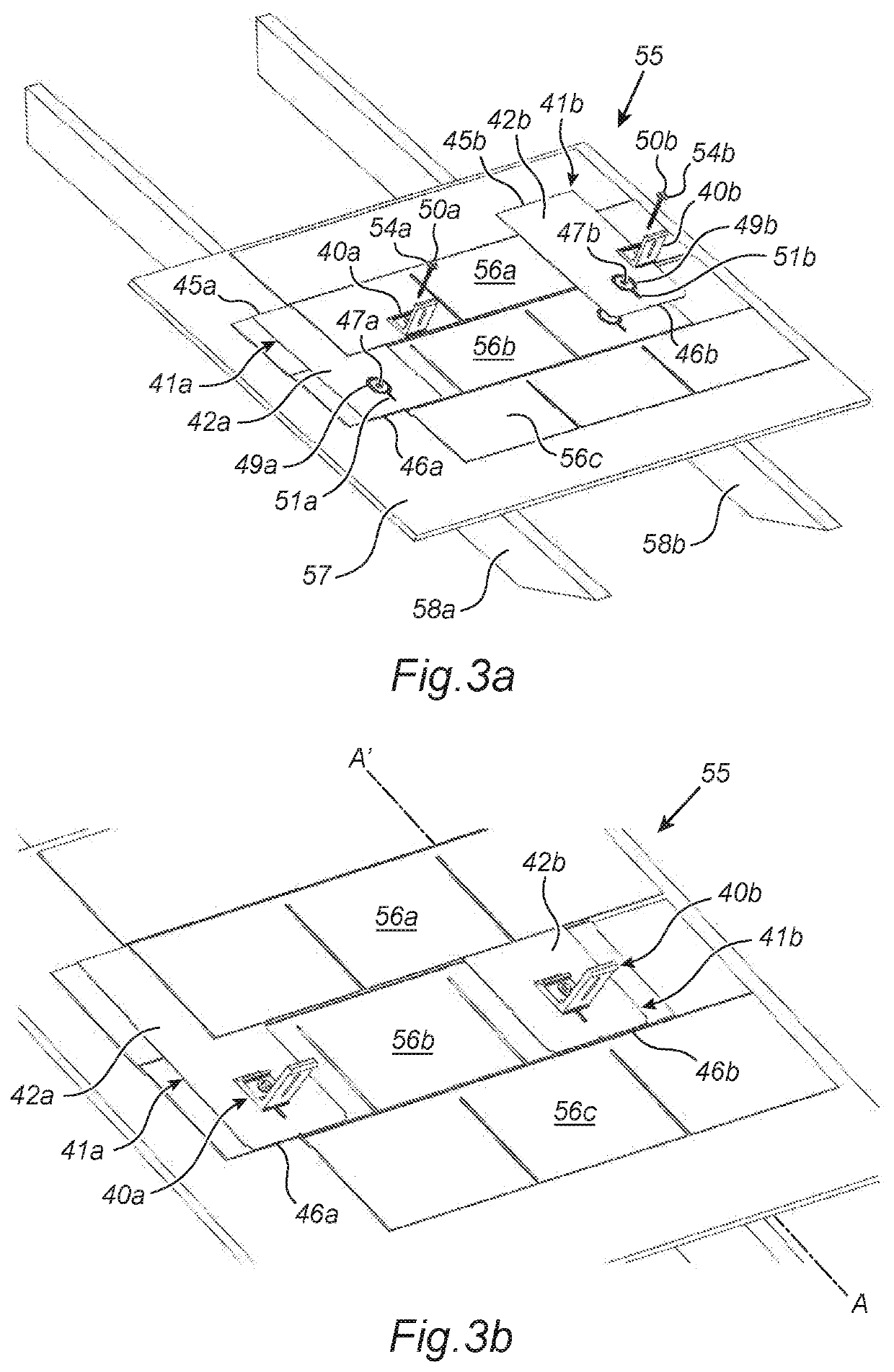Fastening structure and method for fitting a coupling profile to a pitched roof covered with shingles
a technology of coupling profile and pitched roof, which is applied in the direction of solar heat collector mounting/support, solar panels for particular environments, photovoltaics, etc., can solve the problems of conventional roof hooks, solar panels or supporting structures, and achieve the effects of preventing water leakage, limiting water load, and relatively limited protuberance width
- Summary
- Abstract
- Description
- Claims
- Application Information
AI Technical Summary
Benefits of technology
Problems solved by technology
Method used
Image
Examples
Embodiment Construction
[0028]FIG. 1a diagrammatically shows a top view of a fastening structure (1) according to the invention. The fastening structure (1) comprises a fastening plate (2) with a top side (3) and a bottom side (4), and a first end side (5) and a second end side (6), and a passage opening (7) which is arranged in the fastening plate (2) and connects the bottom side (4) and the top side (3) of the fastening plate (2),
[0029]wherein the passage opening (7) is completely surrounded by a peripheral wall (8) which projects upwards with respect to a surface covered by the fastening plate (2), wherein a sunken drainage channel (9) is arranged in the top side (3) of the fastening plate (2). In this case, the upwardly projecting peripheral wall (8) forms a first water-retention feature. A second water-retention feature is formed by the drainage channel (9), which is partially circular and completely surrounds the passage opening (7). In this case, the drainage channel (9) comprises a substantially li...
PUM
 Login to View More
Login to View More Abstract
Description
Claims
Application Information
 Login to View More
Login to View More - R&D
- Intellectual Property
- Life Sciences
- Materials
- Tech Scout
- Unparalleled Data Quality
- Higher Quality Content
- 60% Fewer Hallucinations
Browse by: Latest US Patents, China's latest patents, Technical Efficacy Thesaurus, Application Domain, Technology Topic, Popular Technical Reports.
© 2025 PatSnap. All rights reserved.Legal|Privacy policy|Modern Slavery Act Transparency Statement|Sitemap|About US| Contact US: help@patsnap.com



